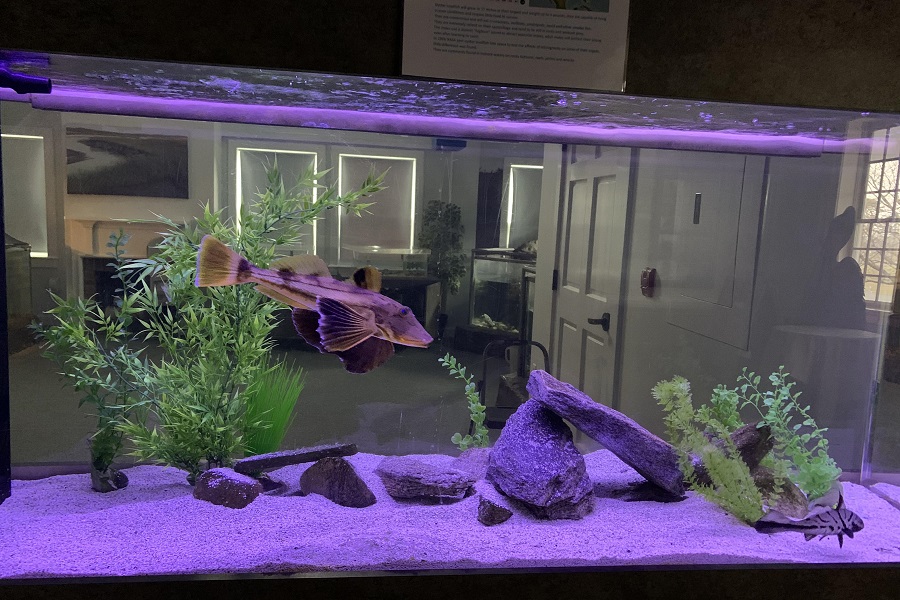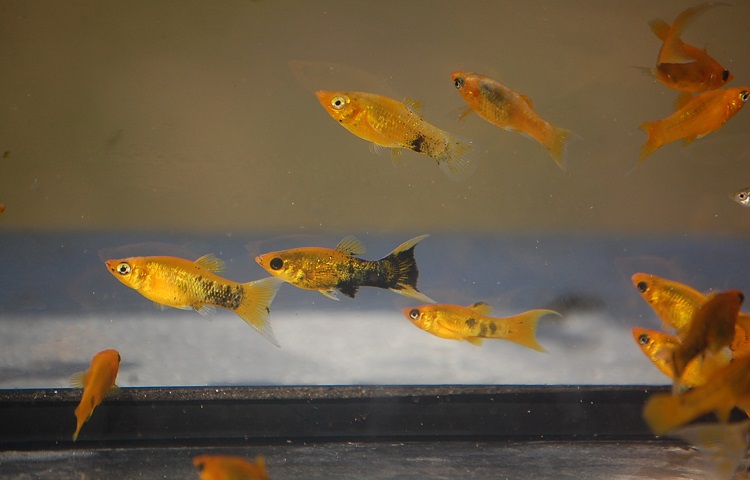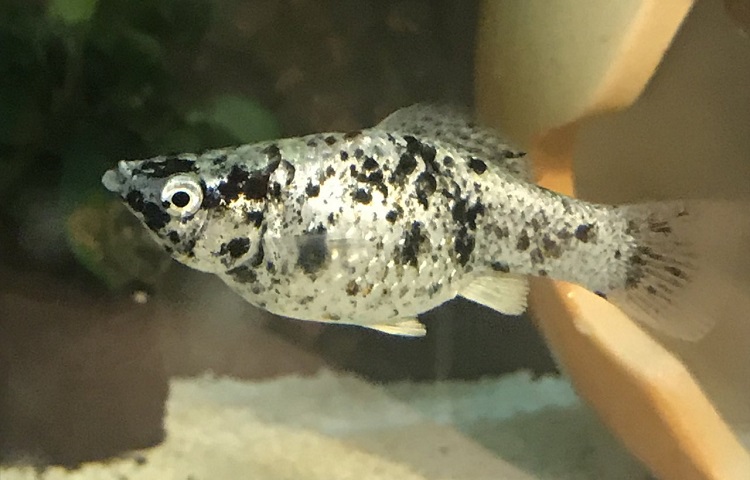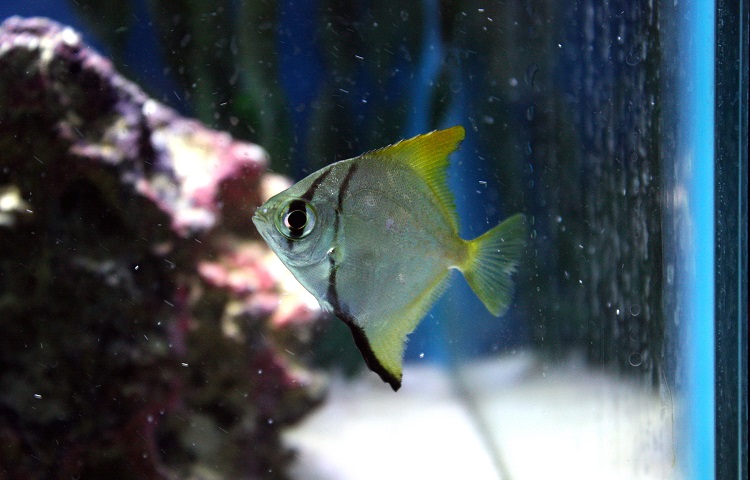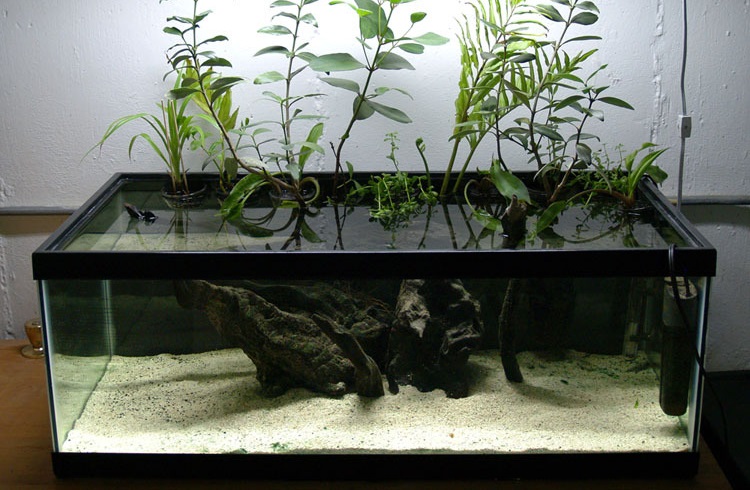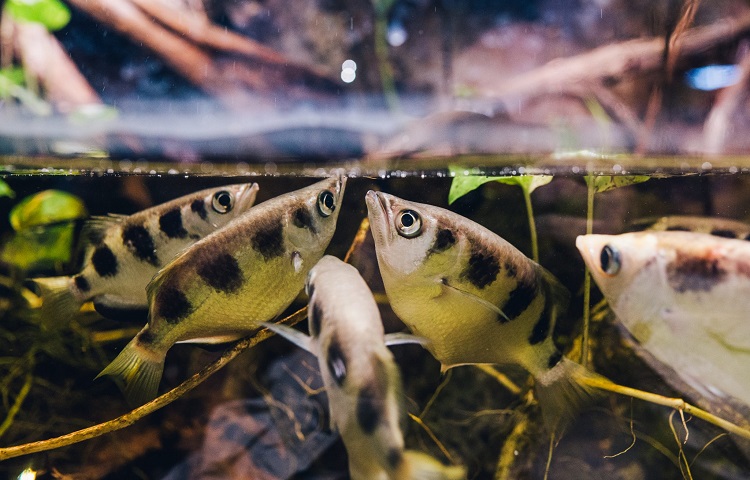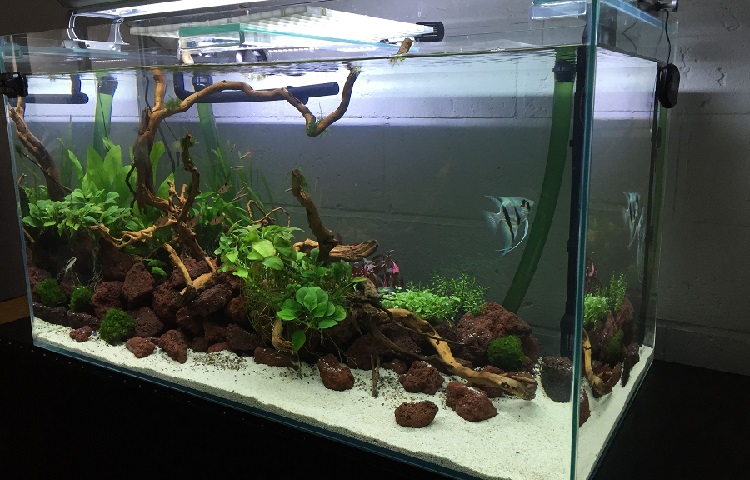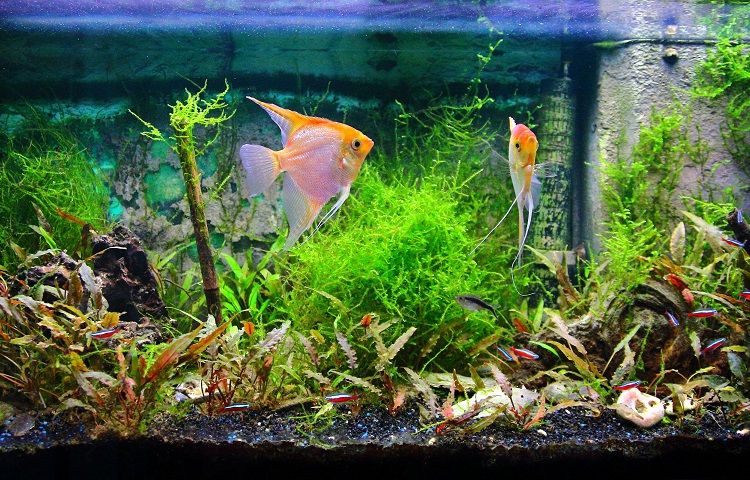Nothing is as fascinating as growing your favorite fish in the comfort of the living room, and a brackish water aquarium is a dream come true for many fish lovers.
A brackish aquarium is a mixture of fresh and salty water, a tank that creates a unique salinity distinctive from seawater. Such an environment allows fish lovers to keep unique species that add glamour to the living room.
If you are new to the delightful world of brackish aquariums, then this article is for you.
Follow each section below and gain more insights about brackish aquariums, the types of fish you can have in them, how to maintain them , and the type of plants that survive in such an environment plus the optimal size of the aquarium tank.
Contents
How Do I Make My Aquarium Water Brackish?
The first step is to prepare the tank, whose size varies depending on the owner’s discretion.
The second step is to set up the brackish water, which means adding salt to the fresh water and ensuring the temperatures remain at 23-29°C. The gravity is imperative and should range at 1.005-1.020, while the PH level should be 7.2-8.5. Check a further breakdown of this procedure below;
Select a tank and fill with fresh water and leave space for adding the saltwater. Be conscious of the recommended temperatures, PH, and gravity.
- Using a separate bucket, mix the freshwater with the salt and heat to the recommended temperature.
- Slowly add the mixed water to the tank and stir.
- Allow the mixture to rest for 20 minutes
- Stir the mixture again.
- Use a hydrometer to keep the gravity at the recommended levels.
What Fish Can Live In Brackish Water?
Brackish fish are common in the area where the saltwater meets the freshwater.
Such fish are capable of tolerating this unique environment, and the common examples are as below.
1. Ballon molly
The Ballon Molly is one of the most ordinary brackish water fish characterized by a sizeable rounded belly and an arched back. The fish comes in three primary color variations, namely, white, yellow, and black.
This brackish water fish has an impressive dorsal fin and lyre-shaped caudal fin. The fish is comfortable in a large water tank of approximately 30 gallons of water and plant species ranging from Anubias, Vallisneria, and Sagittaria.
The Ballon Molly is an omnivorous fish that survives on both algae and meaty foods. To adequately survive the fish requires algae-based flake foods and brine shrimp, tubifex, and dried bloodworms. Also, The Ballon Molly is fond of a peaceful environments and requires a sound filtration system. Remember, the fish can pursue the young ones.
2. Gold dust molly
Another common brackish aquarium fish is the Gold dust molly. The color alone, gold and black, makes the Gold dust molly an exciting choice for hobbyists. The fish is beautiful, energetic, and playful an ideal mood setter for the aquarium.
The Gold dust molly requires a sufficient swimming space of at least 30 gallons of water and a thick algae mat. The female Gold dust mollies expect 10-60 young ones in a span of 60-70 days, which gives an impressive amount to view in the aquarium, and so space must be sufficient for the fish to explore and display its curious and energic nature.
Gold dust mollies are an omnivore that feeds on algae and meaty foods. The fish thrives in an algae-based aquarium with brine shrimp, tubifex, and dried bloodworms. The fish also requires mild temperatures and a minimum tank size of 30 gallons plus water conditions with a pH of 7.0-8.0, KH 10-25, and 68-82°.
3. Bumblebee goby
Bumblebee goby is a relatively small fish that requires reasonable care and mild temperatures. The fish is a carnivore and comes in black or yellow color.
The Bumblebee from the Gobiidae family comes from Southeast Asia and requires a minimum tank size of 30 gallons while water conditions are between PH 8.0-8.2, KH of 9-19, and temperatures of 72-84° F.
The Bumblebee goby can get aggressive and thus not suitable for a mixed aquarium environment. Also, ensure the aquarium has adequate rocks and plants since the females love laying eggs beneath rocks or roots. So the Bumblebee goby provides an exciting view and requires a diet rich in daphnia, brine shrimp, bloodworms, and tubifex worms.
4. Dalmatian molly
The fish of the family Poeciliidae thrives in peaceful environments that require moderate care. It’s an omnivore characterized by it’s white and black color resembling a Dalmatian dog, which survives in 7.0-7.8 PH. Dalmatian Molly grows best in KH 10-25 at temperatures of 68-82°.
Dalmatian Molly survives best in brackish water environment. This type of fish is adaptable and can be taken care of both in the a saltwater aquarium or a freshwater aquarium.
Dalmatian molly has a hearty appetite, which means they require a good filtration system. The fish feeds on healthy plants such as Anubias, Vallisneria, Sagittaria, and java fern.
5. Marble lyretail molly
Another attractive specimen and one of the most prevalent brackish water aquarium fish is the Marble lyretail molly. The fish has a black and white color and thrives best in mild temperatures. The Marble lyretail molly is an omnivore and survives best in tank sizes of 30 gallons and up. The species originated in the US and required a pH of 7.0-8.0, KH 10-25, and 68-82°.
The fish requires plenty of space, algae, and some meat. If settling for the Marble lyretail molly, prepare for the classic brine shrimp, tubifex, and bloodworms mix of foods. The aquarium must be densely packed with algae with adequate room for the female to lay eggs and develop.
6. Mono argentus
The Mono argentus is another brackish water aquarium fish found in inland and coastal waters of Asia and Africa. The fish is diamond-shaped and survives best in mild to cold temperatures. Reasonable care and tank size of at least 125 gallons are necessary to handle the Mono argentus.
The fish requires a large size aquarium due to its growth potential, as the fish grows, so does the need for saline environments. Mono argentus survives best in rocks, plants and a substrate of gravel or sand.
7. Black fin shark
The Black fin shark is a brackish aquarium fish that thrives in mild temperatures. The fish is omnivore by nature and requires a minimum of 70 gallons of water. It survives in a pH of 7.0-7.5, with a KH of 10-12 and 74-79°.
The fish requires sufficient space with plenty of rocks and plants. Black fin shark feeds on high-quality algae, bloodworms, and catfish pellets. The fish comes in white and yellow shades and is sourced from Central America, North America, and South America.
Can Freshwater Fish Survive in Brackish Water?
No freshwater fish cannot survive in brackish water, although some fish species can thrive in salt water and fresh water. Such fish slowly acclimate to their new environment by slowly traveling to it, while some species prefer salty or fresh water to spawn. Thus, it’s only possible to keep a freshwater fish in brackish water by slowly changing the salinity in freshwater, which may be expensive and ultimately unattainable.
Ideally, for the freshwater fish fan, you can have a separate freshwater aquarium this allows the fresh water fish a place to spawn. In case you’re interested in these types of fish, look for the anadromous fish such as the sturgeon, striped bass, shad, smelt, and salmon.
It Is Hard To Maintain The Brackish Water In Your Aquarium?
The maintenance of a brackish water aquarium requires moderate effort since there are parameters such as salinity, temperatures, and PH that need to be accurate. Also, it requires a consistent schedule to ensure the tank remains at the recommended environmental settings. Before choosing a brackish water aquarium, be aware that it’s not the easiest task and it does require constant maintenance
Follow the tips below for regular maintenance cycle of a brackish aquarium.
- Always check the water salinity since the brackish water aquarium is prone to evaporation that may increase the salinity.
- To retain the recommended salinity levels, always add heated freshwater.
- Apply refractometer or hydrometer to keep the salinity at the recommended levels.
- Keep a schedule for changing the water regularly.
- Weekly maintenance of filtration equipment
- Sterilize the water using a UV sterilizer to prevent harmful pathogens from infesting to the aquarium.
- Scrub the aquarium glass regularly to get rid of the algae.
- Check and maintain the quality of water on a daily, weekly, and monthly basis.
What Type Of Aquarium Plants Can Live In Brackish Water?
The following are the ideal plants for the brackish water aquarium.
Anubias plant
The Anubias plant can add glamour to the aquarium the dark green color enriches the environment and as an added bonus it also oxygenates and clean the water around it. The plant grows at a maximum of 7.5 inches and requires a minimum tank size of 10 gallons. The plant thrives in low-moderate lighting and requires foreground to background placement.
The Anubias plant is easy to care for, and a substrate is required to hold the stem together. The plant flowers in a season, which makes a great view of the aquarium. So for a large aquarium, it’s possible to plant more than one Anubias plant and if in season, you should see an impressive display of colors.
Tank requirements
The plant grows in a muddy and soft substrate, making the roots penetrate the soil to hold on and acquire nutrients. It also requires a tank of slightly acidic and warm water kept at temperatures of 72-82°F, with a KH of 3.8, and pH of 6-7.5.
Anubias Nana plant does not require special lighting but ensure the plant is not in a shaded environment. The plant may need trimming and a clean environment to avoid toxicity.
Java Fern
Java Fern is another brackish aquarium plant that belongs to the Polypodiaceae family. The plant is easy to maintain and has a low to moderate growth rate. Java Ferns survives in low to moderate lighting with a tank size of approximately 10 gallons. The plant does well in a pH of 6.0-7.5 and temperatures of 68-82oF.
This green aquarium plant contains hair-like strings and rhizome, and it’s dark green color varies depending on the lighting. The stems can grow 6-8 inches in width and a height of 13.5 inches. Hence, perfect for a larger aquarium tank.
The Java Fern plant comes in three main varieties that impact the leaf shape and size. For instance, the Narrow Leaf Java Fern grows to a height of 12 inches, and the leaves are about 4-8 inches long. The Needle Leaf Java Fern has thin leaves and grows to about 6 inches in height.
The Trident Java Fern grows quicker but has shorter leaves, each bearing maximum of 5 lobes. Finally, the Windelov Java Fern grows to 8 inches with even branches and leaves.
Sogo pondweed
The Sogo pondweed is another essential plant in a brackish aquarium characterized by it’s whitish to greenish leaves, which are approximately 0.078-2 inches long. The plant produces threadlike leaves or thinly linear leaves that are about 0.05 inches wide and 6 inches long.
The Sago pondweed plant grows from a horizontal stem that is slightly compressed and is about 0.05 inches in diameter. The stem base is simple and it blossoms at the top. The plant survives in saline, brackish and alkaline water and is in nature usually a favorite meal of the waterfowl.
The Sago pondweed submerged segments are a great host to the macro and micro invertebrates that serve as food for the fish. Should they wither or die the plants quickly decompose to provide more food for the aquatic invertebrates.
What Is The Optimal Size For a Brackish Water Aquarium?
There’s no optimal size for a brackish water aquariums, although there exist minimum recommendation of 20 gallons. The larger the aquarium, the higher the capacity so you can even hold larger fish, and it’s tends to be easier for maintenance.
It’s recommended to purchase fish of the same temperament and size relative to the aquarium’s size. Avoid aggressive fish that can become a predator in the aquarium.
Necessary Equipment in the Brackish Aquarium
- A hydrometer is an essential tool in the brackish aquarium, and it’s used for maintaining salinity levels. The hydrometer contains well-regulated scales that make it easier for the beginners to set up the alkaline water levels.
- Salt is another essential piece of equipment needed in a brackish aquarium. Marine or aquarium salt is the most commonly recommended for exceptional results. Household salt isn’t recommended due to high levels of iodide and silicates.
- Salt is not added directly to the aquarium, but a separate mixing area is required. Remember, adding salt directly to the aquarium can shock or burn the plants and the fish.
- The tank size is at the owners’ discretion, which means it can be from micro to macro tank. Always check the recommended levels of tanks in the subsections above.
- The aquarium requires a mild to warm temperatures so a well-functioning thermometer is a must. Always maintain warm temperatures in the aquarium. Be sure to get a heater designed for a larger aquarium if you’re buying only one.
- A filtration system is essential to ensure a clean aquarium and good circulation in a warm aquarium tank.
- If you have very little vegetation, a carbon or biological filter can help in compensating for the lack of vegetative filtration.
- Choose swimming pool filter sand or the fine gravel.
- Maintain PH levels of 7.5 to 9.5 or more specific ones depending on the fish you have inside
- Choose the best substrate, ones with crushed coral leaves tend to perform best in brackish aquariums. Fine sand is recommended because of the small size and capacity to clog the aquarium filter. The advantage of the crushed coral leaves is to buffer the water ph.
- It’s possible to use small stones or aquarium gravel but it’s not sufficient in maintaining the pH levels.
- The water pump is efficient in dissolving salt and mixing in air, helping maintain the aquarium at ideal levels.
- A Protein skimmer works perfectly to ensure quality maintenance of the aquarium.
Simple Steps to Collecting Fish and Animal Food
The simplest method of maintaining an aquarium is how you collect the food. So start by purchasing a Seine Net where a longer one is better filtering and catching any stray debris and food stuffs left over. A dip net with a fine mesh is essential for catching the marsh and the shrimp fish leftover from feeding the fish.
Conclusion
The brackish aquarium is attractive looking aquarium type and it works perfectly for that bit of glamour to the house.
Environmental maintenance is the key to success for this type of aquarium. The nature of the fish is also essential to avoid ruining in the environment. The temperatures, salinity, and pH determine the aquarium’s quality, which grows more attractive and hosts many colorful species.
Maintaining a brackish aquarium is not a simple or easy job. Some effort is essential to ensure the parameters are consistent. Always purchase the right equipment and use the recommended steps to collect the fish and animal foods.
In the comments below share with us your experience with a brackish aquarium. Which fish species can you recommend to a beginner, and what facts are essential for a successful brackish aquarium.

Ian Sterling, founder of Fishlab.com, began his aquarium journey over 30 years ago, driven by a deep fascination for fish and their diverse personalities. His website, Fishlab.com, is dedicated to making fishkeeping accessible and enjoyable, offering beginner-friendly guidance, expert insights, and a community for aquarists to connect and share experiences.


